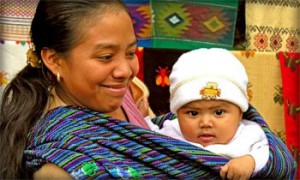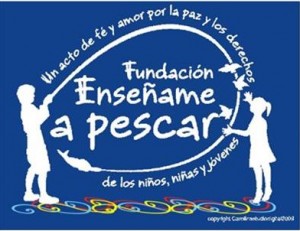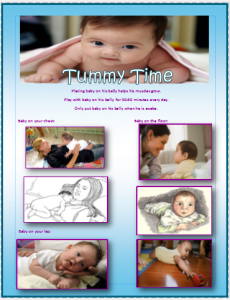Infant Positioning and Handling to Enhance Motor Development
A UNC PT Outreach Project in Guatemala
Jaime Emel
Introduction:
I am thrilled to fulfill my passion for early intervention physical therapy and enhance my cultural competence during the UNC PT Outreach trip to Guatemala! Initiated in 2010, UNC PT Outreach aims to meet the needs of underserved populations while increasing cultural competence among future PTs.1 I will be part of a team including 13 students, 2 UNC faculty members, and 6 practicing physical therapists who will educate persons in Guatemala through health fairs and presentations. We will also work alongside Guatemalan therapists and students to treat children and adults with disabilities in the hospital, clinic, and school settings.
This project aims to educate new or expectant mothers about infant positioning and handling to enhance motor development and prevent deformity. To achieve this goal, I will present educational materials and demonstrate techniques at two health fairs organized as part of the Outreach trip. The community health fairs will take place in San Juan Alotenango at Enseñame a Pescar, and in Pastores at Clínicas Médicas San José.
Enseñame a Pescar (teach me how to fish) is a school for children with developmental disabilities founded in 2010 by Juan Cojolón Chavac. Through volunteer work, their aims are to provide an educational site for children with learning disabilities, autism, cerebral palsy, Down syndrome, and other developmental and cognitive delays, who otherwise would not have access to an education.2 Clínicas Médicas San José, is a free healthcare clinic created in 2011 by the nonprofit organization “From Houses to Homes.” The clinic’s mission is to “help individuals achieve their highest levels of health through outpatient care, preventative care and health education, while respecting their cultural traditions;” since opening they have served more than 10,000 people from the Pastores community.3
Literature Review:
To develop accurate educational materials I completed extensive literature review and developed two evidence tables. The first evidence table aimed to address the PICO question: “For babies, ages birth to six months, does participation in regularly scheduled prone positioning (“tummy time”) vs. unstructured positioning improve gross motor development?” Research indicates that prone positioning is important for the development of antigravity behaviors including head, neck and trunk control, upper extremity weight bearing, shifting and reaching.4 These skills prepare the infant for mobility through creeping, pull to stand and eventually ambulation. Infant mobility is crucial for environment exploration, object manipulation, and problem solving which lead to neurologic and sensory development.5 Children who achieve motor milestones late may risk long term motor and neurologic developmental delay.5 As a whole, the research demonstrates a positive correlation between prone positioning and gross motor development.4-8 The results also support value and need for a parent education initiative targeting wakeful prone position participation.5,8-9 I also completed a research paper that expands upon the evidence table information.
The second evidence table explores varied positioning and developmental activity “training” along with effects impacting gross motor development in rural Guatemala. Evidence indicates that varying infant positions frequently is important to prevent muscular imbalances, and parent-facilitated developmental activity results in improved motor abilities.10,11 The average age of unsupported walking in Guatemala is 15 months; later milestone achievement is correlated with poor postnatal growth and malnutrition.12
Educational Materials:
I completed a health literacy assessment to ensure that my handouts are culturally sensitive and appropriate for use by the women of Guatemala. It was determined that many persons in Guatemala have a low literacy level, therefore materials are primarily composed of images with a few, short sentences. With the help of my Capstone committee members and advisor, I created 3 handouts to supplement the verbal education at the health fair. The first handout (English/Spanish) discusses tummy time recommendations and provides examples of different prone activities. The second handout (English/Spanish) emphasizes a supine sleep position to reduce the risk of SIDS and describes swaddling practices for infant comfort. Finally, the third handout (English/Spanish) describes infant carrying strategies and the importance of varying positions.
I am not fluent in Spanish, therefore I created a script (English/Spanish) to guide the verbal education. This will allow me to provide the basic information and demonstrations without the assistance of a translator. However, a translator will be available at the health fair to assist as needed to answer questions and during unscripted conversation. I also collected toy and blanket donations and will provide these items to the patrons of my booth. This will allow the mothers to participate in swaddling recommendations and engage their baby during tummy time.
Evaluation:
To assess personal goal achievement and the success of my project, I created a peer evaluation form. This form will be completed by PT students, practicing PTs, and UNC faculty who are in attendance at the health fair(s). I will enlist the feedback of anyone who observes my interaction with persons at the health fair to rate the perceived level of effectiveness and appropriateness. Peer feedback rather than patron feedback was chosen due to the anticipated low literacy level of the population of interest, and to prevent inappropriate requests of the health fair patrons.
Special Thanks:
I would like to extend a HUGE thank you to everyone who made this project possible! Thank you to my Capstone advisor, Katie Ollendick for excellent guidance and support, and my committee members, Marian Stein and Andrea Hartzell for great feedback and suggestions. Additionally, muchas gracias to Chris Peña and Sadye Paez Errickson for translating my Capstone materials. Finally, I am very appreciative of the Scott family and the Pugliese family for their generous toy and blanket donations. I couldn’t have done it without each and every one of you!
Please feel free to contact me directly with any questions or comments at emel@med.unc.edu or by utilizing the comments section below.
Visit http://uncptoutreach.blogspot.com/ to follow our experiences with UNC PT Outreach in Guatemala April 22-April 30, 2014!
References:
1. UNC Department of Allied Health Sciences: Physical Therapy. UNC PT Outreach 2012. http://www.med.unc.edu/ahs/physical/news/unc-pt-outreach-2012. Accessed April 16, 2014.
2. UNC Physical Therapy Outreach. Statement of Purpose. https://uncstudentorgs.collegiatelink.net/organization/uncptoutreach/DocumentLibrary/View/137839. Accessed April 16, 2014.
3. Clínicas Médicas San José. From Houses to Homes. http://www.fromhousestohomes.org/clinicasmedicas.html#!staff/c13dq. Accessed April 16, 2014.
4. Dudek-Shriber L, Zelazny S. The effects of prone positioning on the quality and acquisition of developmental milestones in four-month-old infants. Pediatr Phys Ther. 2007;19(1):48-55.
5. Lobo MA, Galloway JC. Enhanced handling and positioning in early infancy advances development throughout the first year. Child Dev. 2012;83(4):1290-1302.
6. Kuo YL, Liao HF, Chen PC, Hsieh WS, Hwang AW. The influence of wakeful prone positioning on motor development during the early life. J Dev Behav Pediatr. 2008;29(5):367-376.
7. Rocha NA, Tudella E. The influence of lying positions and postural control on hand-mouth and hand-hand behaviors in 0-4-month-old infants. Infant Behav Dev. 2008;31(1):107-114.
8. Jennings JT, Sarbaugh BG, Payne NS. Conveying the message about optimal infant positions. Phys Occup Ther Pediatr. 2005;25(3):3-18.
9. Zachry AH, Kitzmann KM. Caregiver awareness of prone play recommendations. Am J Occup Ther. 2011;65(1):101-105.
10. Lee HM, Galloway JC. Early intensive postural and movement training advances head control in very young infants. Phys Ther. 2012;92(7):935-947.
11. Vaivre-Douret L, Ennouri K, Jrad I, et al. Effect of positioning on the incidence of abnormalities of muscle tone in low-risk preterm infants. Eur J Paediatr Neurol. 2004;8(1):21-34.
12. Kuklina EV, Ramakrishnan U, Stein AD, et al. Growth and diet quality are associated with the attainment of walking in rural Guatemala. J Nutr. 2004;134(12):3296-300.







7 Responses to “Infant Positioning and Handling in Guatemala”
Jaime Emel
Cathy,
Pathways.org is a great resource, I can’t believe I’ve never come across it before. Thanks for introducing it to me! Motor milestones were originally included in the project but that topic was cut for a couple of reasons. 1. The body of research indicates that typically developing children will achieve motor milestones in a specific order and in a ~ time period regardless of intervention (other than prone positioning). 2. Cultural differences in Guatemala (carrying babies for many hours a day for many years) will lead to differences in milestone achievement compared to US babies, and there isn’t enough research to determine typical Guatemalan milestone achievement and 3. It was decided that any greater than 3 topics may overwhelm the women at the health fair.
Jaime
Cathy Howes
Hi Jaime, Congratulations on a great Capstone and integrating it into one of your passions. That’s the best! I really think your handouts will be beneficial. I am so sorry I can’t go on the trip as it looks like a wonderful experience. You may want to look at the website pathways.org. before you go. It has some suggestions for alternatives for babies who don’t like tummy time- children with reflux and some children with disabilities. Are you discussing motor milestones/typical development as well? It’s interesting that many parents are unsure of what skills the baby should have and at what age. This may be beyond the scope of your project. Congratulations on finishing all this beneficial, relevant work! Enjoy Guatemala. Cathy
Jaime Emel
Casey,
Thanks for your comments. I was pretty excited to find that article too; it’s amazing what you can find when you use the right search terms 🙂 I don’t think I can post documents using this comment box, but I emailed you the handouts. It’s still simple language but there’s a lot more information than the Guatemala handouts. Also feel free to save my evidence tables, the articles will give you a more professional understanding.
Jaime
Casey Poff
Jaime,
WOW! Where do I begin!? I love, love, LOVE that you were able to find a research article that specifically evaluated the motor development of children in rural Guatemala! Secondly, you’re handouts look fantastic–simple language and mostly pictures; all culturally sensitive. Lastly, what a great idea to have a script to assist you with conversation at the health fairs. It is clear that you’ve planned for every potential scenario, including having to carry on a conversation without an interpreter!
I am so excited to see how things play out at the health fair. This is some really great information, and I know that you’ll make an impact on all of the new mothers you talk to!
Also, I was reading through the comments between you and Cathryn, and am wondering if you would mind sharing the handouts you made regarding tummy time and supine sleep for your acute care rotation? My experience in early intervention has been slim-to-none, and I’d love to expand my resource library as much as possible as I (soon) enter the working world! (Obviously giving you full credit for your work:)
Great job, Jaime! Seeing your web page made me even more excited for our trip!
Casey
Jaime Emel
Cathryn,
Thanks for your suggestions. I actually created various handouts and pamphlets during my acute care rotation for the PTs to provide parents in the NICU. I was surprised to learn how many parents in the US were unaware of supine sleep and tummy time recommendations so I figured even more were unaware in Guatemala. That experience is what gave me the idea for this project. I would love to use all of the knowledge I’ve gained to continue my efforts in the US throughout my career!
Jaime
Cathryn Ghena
Jaime!
Great work on a very important topic. Infant handling and positioning is an issue that keeps reappearing in my pediatric experiences–and one that I wish we would have had a bit more education on in PT school! I think that your evidence charts serve as a great foundation for therapists looking to learn more about the effects that positioning (or lack there of!) can have on gross motor development. I wish I would have used more of the articles that you presented when I was working on my “Tummy Time” project for our neuro elective (http://neurospecialtopics.web.unc.edu/tummy-time/). I talk a little bit about the history of decreased tummy time as well as strategies for increasing prone play, in case any one wants some additional information on this topic!
I think your focus on educating women in Guatemala is awesome. Your handouts are very user friendly and visually appealing! I can’t wait to see how this turns out and have no doubt that this population will gain a lot from all of your hard work. However, I also want to encourage you to consider using your handouts/research stateside! Many parents are fearful to place their child in prone because of SIDS; or, they simply don’t know how important tummy time is for development making it a low priority. Your “Tummy Time” handout in conjunction with education would be a wonderful tool for new parents! My pediatric instructors would actually provide frequent inservices to pediatricians on this topic in an effort to get the word out there on the importance of prone play. Your handouts would be a great addition to this. Perhaps consider making the handouts available in pediatric offices or turning it into a brochure for more widespread use!
Overall, great work!!
-Cathryn
Allison Rowe
Hi Jaime!
Wow – great capstone project. I was especially interested to see that you found an article directly pertaining to motor development in Guatemala. I feel strongly that your presentation of this information along with distribution of your hand outs will have positive effects on many, many people. Your handouts were great. I loved the pictures and simplicity of what you were saying in them – I thought they were very appropriate for your intended audience. By having these handouts available, I hope that your information is able to be passed on through families and neighbors in Guatemala!
I’m SO excited for our upcoming trip, and I can’t wait to see how your presentation goes. I’m sure its nerve wracking to have to present to individuals that do not speak the same language as you, but you seem to have done a lot of preparation to navigate these language barriers as best as possible. Again, I think with the help of your hand outs that you will absolutely get the message across.
Great job, Jaime!
Allison